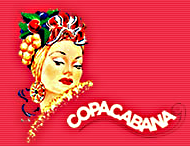
William M. Dowd photos
CULODDEN, Scotland -- Bonnie Prince Charlie was the icon of 18th-century
Jacobites who wanted to put him on the throne of Scotland, freeing the nation from the shackles of the ruling English crown.
After all, they reasoned, he was a descendant of the Stuarts, a clan descended from the almost mythical Scottish hero Robert the Bruce. And the English were ... well, they were the hated English.
The movement had a few problems. For one, Charles Edward Stuart Louis John Casimir Silvester Maria Stuart, born in Rome in 1720, was not much of a hands-on guy as uprisings go. He spent only 12 months of his 68 years in Scotland, living a big chunk of the final 20 in Rome as the Duke of Albany. For another, any overt sign of allegiance to him could be punishable by death.
The high point of the Stuart uprising was 265 years ago. It was on April 16, 1746, that an English force led by the
Duke of Cumberland crushed the massed Highlanders on a battlefield here less than 35 miles from Inverness, with 1,500 or so Scots killed in less than an hour compared to about 50 Redcoats.
It was the last battle on British soil, and ushered in a long period of English moves aimed at tearing apart the Scottish clan system that was the central nervous system of the country.
A definitely state-of-the-art visitors center was opened here in April 2008 on the anniversary of the battle. After touring it, I feel comfortable predicting it will be used as a prime example of what today's visitors centers should look like.
The multi-level structure is designed to take advantage of today's visually-oriented society to tell a centuries-old story. As visitors are led through the center, the English side of the story is told on one wall, the Scots' side on the other, with a variety of displays in the center of each corridor.
Included are opaque screens offering silhouettes of combatants and others who "come to life" when an interactive screen is touched. They tell the story of Culodden and the times from their points of view, often in words taken from actual diaries of the times.

In the "immersion room," visitors are led into a seatless space with projection screens on each wall. Each shows a different angle of the battle; you can watch on one screen an English cannon being fired, then turn and look at the opposite wall and see its impact on the Highland forces. The sound and fury are designed to give the visitor an idea of the noise and confusion inherent in a battle.

Among the numerous displays are several glass cases filled with weapons of the sort used in the mid-1700s. Rather than being lined up in precise lines as is the case in most museums, a guide explained, "these should be viewed as being brandished the same way they would be in battle, but then remove the people from the equation and leave the weapons as they would be then."
Other artifacts on display are several pieces from the glassware collection owned by the Drambuie Liqueur Co. Ltd. of Edinburgh. (Drambuie is a Scottish liqueur based on the recipe imparted by Bonnie Prince Charlie to one Makinnon of Skye for assisting him in the uprising of 1745. The Makinnon family to this day owns the exclusive Drambuie franchise.)
The complete collection includes some items with beautiful, swirling designs of leaves, grapevines, birds and other nature elements. Others have numerous designs peculiar to the Jacobite movement, usually etched into what were called "Amen'' toasting glasses that were stored in secret lest the English authorities see the pro-Prince Charlie designs on them.
For example, such words as
redat (may he return) and
revireseat (let it grow again) on the glasses were notes of support for the exiled Stuarts. The six-petaled white rose, another Jacobite symbol, is a common design as well, and a wide variety of intricate swirls, legends and designs make one long to hoist a Drambuie or two in honor of the craftsman if not of the Stuarts.
Once outside, visitors are given GPS-connected handsets to carry as they walk through the battlefield where red flags indicate the English lines, blue flags the Scots'.
As one reaches a point of interest, the GPS is triggered and the handset broadcasts information to the visitor who can take advantage of on-screen prompts to get additional information.

Only one building from the battle period remains on the land, and even that may have been rebuilt from the stones used in an earlier building. But, it gives visitors a feel of the type of structure common in the area at that time.
ON THE WEB
•
Culloden Battlefield Site
•
Battlefield video before the new center
•
Dowd's Guides home page
 NEW YORK -- OK, first things first. It's not on East 60th where the original was. And, it's not on 34th Street and 11th Avenue where it once was. But, dammit, the Copacabana is back!
NEW YORK -- OK, first things first. It's not on East 60th where the original was. And, it's not on 34th Street and 11th Avenue where it once was. But, dammit, the Copacabana is back!




